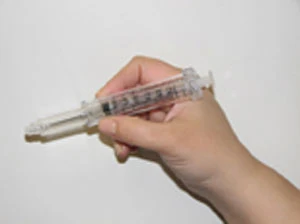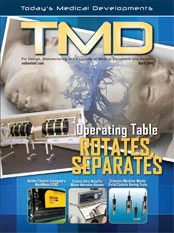
Research shows that each year, more than two million needle-stick injuries occur, infecting worldwide healthcare professionals with Hepatitis B, Hepatitis C and HIV. Some 35 million workers are affected by this scary statistic. In the U.S., healthcare workers report between 800,000 and one million needle-stick instances annually. This doesn't include those not reported.
Robin Martin, president and CEO of Medical Safety Technologies, Inc. (MST) put this into perspective by saying, "Syringe needles are designed to go through skin very easily and rapidly – that is their whole purpose. As a result, this makes them very dangerous anytime they are exposed." He also wants to make sure it's known that these accidents are not the result of careless nurses. "Regarding better training to reduce needle-sticks, it has had a slight effect, but the problem is not that nurses are careless when they give injections. These incidences happen because the devices themselves are inherently very dangerous."
"As long as there are injection devices that expose the needle, there will continue to be needle-stick injuries at some rate. That is inevitable. The only way to really solve the problem is to get rid of needle exposure in the first place," explains Martin. Thanks to Martin and his team at MST, there is now a patented solution to this issue.
Medical Safety Technologies, Inc. has eight patented and patent-pending safety medical devices it plans to introduce over a four-year timeframe. The first of these products – the Turtle SafeShot Safety Syringe – was placed on the market in November 2007.
The Turtle SafeShot is the only commercial syringe in which the needle is never exposed, providing absolute protection when used as directed under all circumstances, including:
- Automated protection before use
- Automated protection during use
- Automated protection after use
- Automated protection during disposal
- Automatic protection if dropped, bumped, pushed or pulled.
The Turtle provides protection automatically and passively; the user does not have to do anything for the safety feature to engage. Its safety features cannot be bypassed, and the Turtle is both easy-to-use and economic for healthcare providers. "Because the Turtle is completely passive, medical care professionals don't have to do anything different; they can maintain their own technique," Martin says.
Turtle's Market Opportunity
Worldwide, there are approximately 35 billion syringes used each year. MST compiled an estimate from a variety of sources, showing that the market for syringes is about $5.6 billion today. The estimated market for safety syringes is $1.69 billion, growing about 8% each year. This is good news for the Turtle; its niche market is growing, opening doors for prevention and eventual decline in needle-stick accidents. That is the hope for MST's safety syringe. "I absolutely think there will be a decline in these instances, but it is dependent on the marketing success of safety syringe manufacturers," Martin says of their place in the market. He continued by saying that MST is lobbying insurance companies in the hopes that they will offer discounts into policies for those using the Turtle SafeShot Safety Syringe.
Martin has thrown himself into providing this extra safety after having the frightening experience of a needle-stick. This happened to him not once or twice, but three times while he was working as an RN – one of the incidences happened while assisting a co-worker. Being near and dear to him, Martin wanted to make sure this information was getting out to not only healthcare professionals, but also to the public.
Current U.S. Occupational Safety and Health Administration (OSHA) regulations position the Turtle in a uniquely favorable competitive position, based on the company's patented and patent-pending automatic and passive safety features. There are at least 26 different syringes and needles currently marketed as "safety syringes" or "safety needles". However, all other current models expose the needle at some point while being used, and only provide an active safety feature after the injection is complete, making them suitable for safe disposal, but not for safe use. More than anything, Martin wants everyone to know and to remember the two important differences the Turtle offers: Turtle covers the needle 100% of the time, eliminating any threat of exposure to a stick; and the Turtle is completely passive, meaning medical professionals don't have to do anything different, they can maintain their personal technique.

Explore the April 2008 Issue
Check out more from this issue and find your next story to read.
Latest from Today's Medical Developments
- Humanoid robots to become the next US-China battleground
- Air Turbine Technology’s Air Turbine Spindles 601 Series
- Copper nanoparticles could reduce infection risk of implanted medical device
- Renishaw's TEMPUS technology, RenAM 500 metal AM system
- #52 - Manufacturing Matters - Fall 2024 Aerospace Industry Outlook with Richard Aboulafia
- Tariffs threaten small business growth, increase costs across industries
- Feed your brain on your lunch break at our upcoming Lunch + Learn!
- Robotics action plan for Europe





